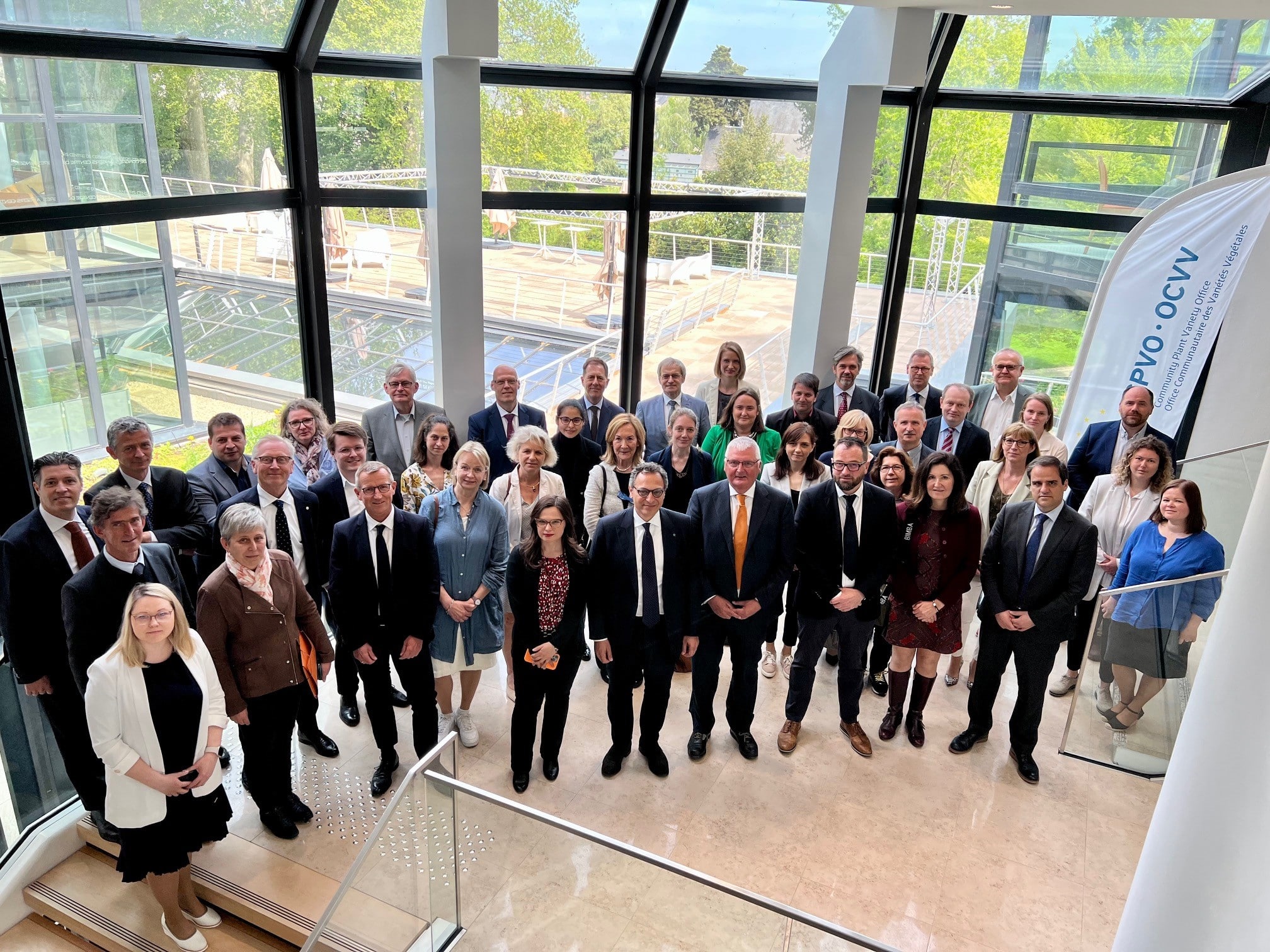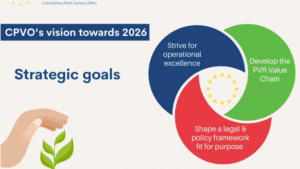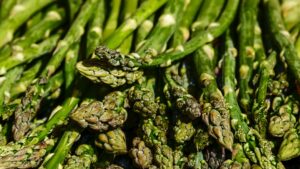Earlier this year, on the 1st of February 2022, Francesco Mattina took up his duties as President of the Community Plant Variety Office (CPVO), the European Union (EU) agency, which is responsible for granting plant variety rights, after being appointed to this role by the Council of the European Union on 20 December 2021.
Francesco Mattina, an Italian national, specialised in EU law and in Intellectual Property law, joined the CPVO in 2013 after gaining international experience in private law firms as a partner and in the EU public sector as a senior legal advisor in industrial property at the EU Agency for Intellectual Property (EUIPO). He joined the CPVO as Head of the Legal Unit in 2013 and was appointed Vice-President in 2017 until now. His new mandate has a duration of five years and can be renewed once. European Seed sat down with him to get his take on his role and the future of plant variety rights.
European Seed (ES): Francesco, congratulations on being nominated as the new President of the CPVO. How do you feel about it?
Francesco Mattina (FM): Thank you. I feel extremely enthusiastic and energetic about this new chapter of my professional life and the many opportunities and challenges that lie ahead of us.
It has been a long process since I applied for this role in 2020. My nomination was validated by the Council of the European Union in December 2021, and I started as President of the Community Plant Variety Office (CPVO) in February 2022. But, as you may know, the CPVO is not totally new to me. I joined the Office in 2013 as Head of the legal unit and I was the Vice-President since 2017.
I feel honoured to be given the helm of the Community Plant Variety Rights system. I also feel privileged to work with a team of very experienced and passionate professionals who strive to deliver the best value for money for the breeders and who work hard to establish CPVO’s reputation within the EU and also beyond its borders.
The EU PVR system is often regarded as the most harmonised Plant Variety Rights system globally, and this is thanks to the work and knowledge of the CPVO experts in Angers, France, and of all the experts working for the entrusted national examination offices who carry out DUS examinations on behalf of the CPVO.
People and knowledge are our biggest assets!
ES: Some big shoes to fill, from both Bart and Martin. What have you learned from your predecessors?
FM: Both Bart Kiewiet and Martin Ekvad are world-class Intellectual Property lawyers specialised in Plant Variety protection, and I am grateful for what they have done for the CPVO.
Bart Kiewiet established the Office and built-up an efficient organisation that serves the breeders since the mid-1990s. Martin Ekvad opened up the Office to the digital age, broadening the use of the MyPVR application system. He also paved the way for meaningful activities on the international stage.
I have a similar legal background as them but every change in leadership has a mixture of legacy and transformation. My vision for the CPVO is to keep all things that work well and to improve everything that is necessary, always keeping good governance, the EU’s public interest, and the breeders’ needs in mind.
The world is changing very fast: the COVID crisis has accelerated the digital transformation; the war in Ukraine shows us the importance of food security and food sovereignty; the climate crisis shows us that the EU Green Deal policies are necessary, and they are not just a political buzzword.
I want that the CPVO’s new Strategic Plan reflects these political realities and I also wish that plant innovation and plant variety rights are widely recognised for their contributions to Europe’s prosperity.
ES: What will you be doing differently compared to previous presidents?
FM: I do not like to compare individuals against each other. We are all facing responsibilities at different times, so it would be unfair to say that things should have been done differently in the past.
I am now the President of the CPVO for the next five years, with the possibility to be renewed for a second mandate in 2027. Until then many things can happen. My ambition is to build a future proof CPVO that is fit for purpose and that the Community Plant Variety Rights system adapts to tomorrow’s societal challenges.
For instance, I would welcome a review of the founding regulation of the CPVO during my term so that our mandate is extended to properly address the needs of the whole breeding community, from the researchers to the growers, from the breeders to the farmers.
From a policy perspective, we are supporting the European Commission in the context of the review of the plant and forest reproductive material legislation (PRM) and we are following with attention all debates linked to the New Genomic Techniques.
I have also initiated a series of study visits in the EU Member States as I wish to meet all national authorities who test plant varieties on behalf of the CPVO and I am curious to comprehend the various traditions, specialisations and expectations of large and small breeding companies from across Europe as well as their business models. This approach allows us to better address emerging demands and would also better support a fact-based policy making.
I have visited Italy, The Netherlands, Germany, and Spain in the first four months of my mandate, and I will visit Czech Republic at the end of the summer.
Let’s not forget that the CPVO’s “raison d’être” is to serve the European Union by granting IP protection to plant breeders, so that they can invest in R&I and they can find solutions to secure the production of more healthy, sustainable, diverse and quantitative agricultural and horticultural crops.
This is where we will need to place focus!
ES: Which changes have you witnessed at the CPVO during these past 10 years.
FM: I witnessed that being an open and collaborative institution is vital. The multi-stakeholders’ participatory approach has gradually become the cornerstone of our actions, enabling us to operate more efficiently in both the legal and technical ecosystems. And more must be done!
For instance, the cooperation with the European Commission and the relationship with our parent Directorate-General (DG SANTE) in Brussels is excellent. We see some room for further exchanges and collaboration in the years to come and the same goes with the major European IP authorities.
In practice, we have just renewed our partnership agreements with the European Patent Office (EPO) in Munich, Germany, and the European Intellectual Property Office (EUIPO) in Alicante, Spain. It allows us to exchange information seamlessly and to collaborate on certain HR, or operational matters. It is very helpful to be connected to peer organisations and to be well active in the European network!
Equally useful is CPVO’s involvement in international activities beyond the EU borders to support the priorities of the European Trade policy based on multilateralism and strategic partnerships.
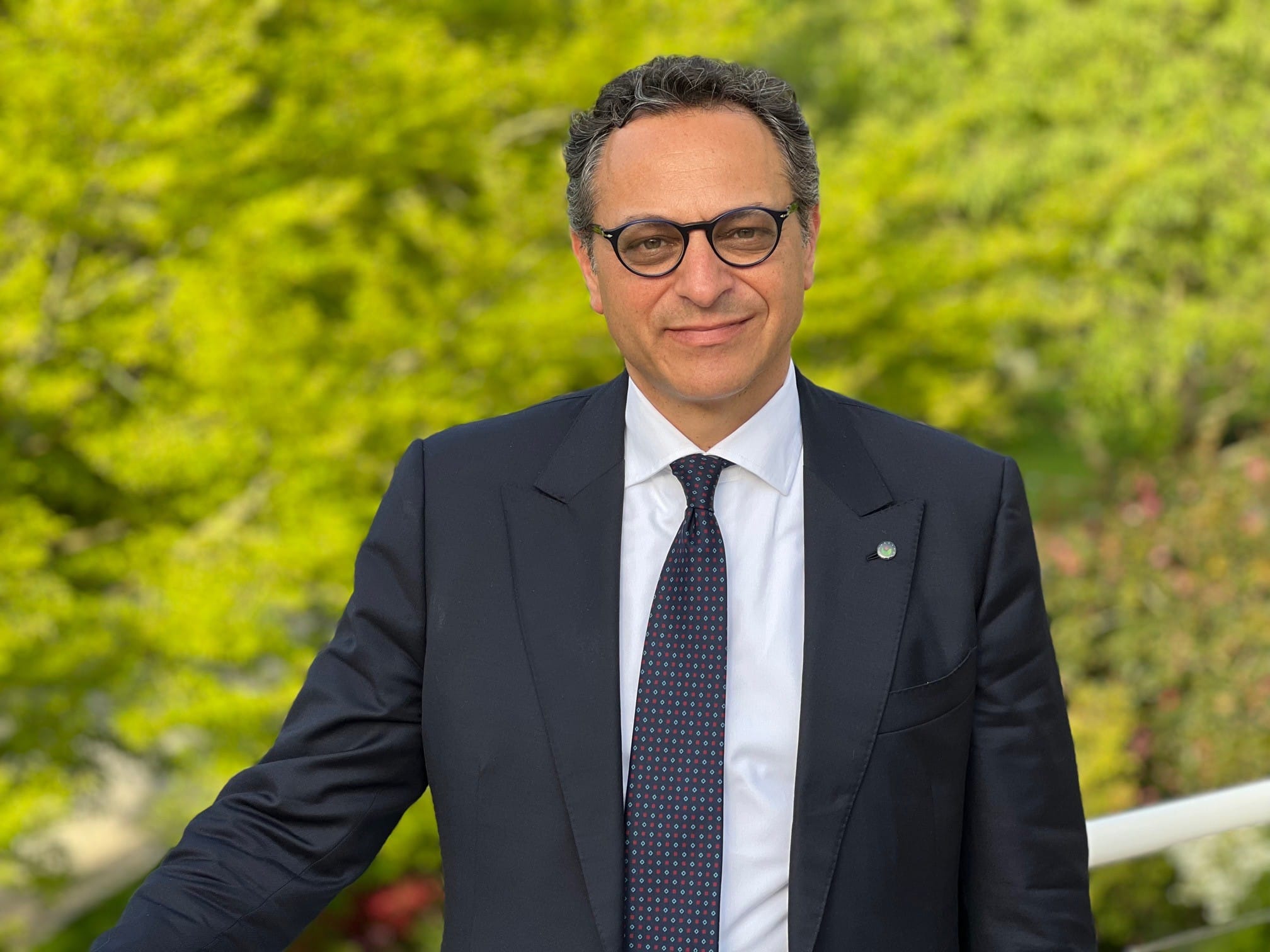
The CPVO experts are actively involved in UPOV meetings and here in particular in the Technical Working Group meetings where they can exchange with technical experts from all over the world. The work in UPOV is amongst others the basis for elaborating the DUS guidance within the EU.
We have also taken an active role in various international cooperation and trade projects funded by the European Union in the past few years: IPKey in Latin America, Southeast Asia, and China; TAIEX missions and CarIPI projects in the Caribbean Region and Central America, the OAPI PPOV project in Africa, AfrIPI and others.
In almost all regions of the world, the CPVR system based on the 1991 UPOV Convention is seen as the model to replicate, and our experts provide guidance and organise trainings.
We still need to be cautious at enforcement issues in some countries but, overall, I am convinced that our active participation in UPOV meetings and our open dialogue with many national authorities are truly beneficial to the European breeders.
Within the EU, the structured relationships we nurture with our network of entrusted Examination Offices in the EU Member States is a strong pillar of the system.
On top of carrying out DUS tests, our hundreds of internal and external experts must keep an eye on new breeding trends, and some of them are involved in R&D projects. The CPVO is a knowledge-based organisation and technical experts should keep abreast of the latest scientific developments.
For instance, biomolecular techniques (BMTs) and gene editing, such as CRISPR/Cas, are the real stars of the last decade and their potential has not been fully explored yet. The current process of revision of the GMO regulation may encourage European breeders to invest more in this system. New Genomic Techniques could provide a very significant support to the development of plant innovations adapted to a sustainable agriculture. More must be done with them!
We could also explore what could be improved through emerging digital technologies which are not yet fully exploited – such as big data, quantum computing, artificial intelligence, and blockchain. And we must seriously take stock of the public concerns as regards to preserving biodiversity and making agricultural production more sustainable.
ES: Talking about sustainability, the CPVO recently released a study assessing the impact of the CPVR system on the EU economy and the environment. Why did you release such a study? Have you learnt anything you did not know yet?
FM: This joint European study is a project we had in mind for some time given that no similar assessment of the CPVR system had ever been produced before, and we wanted to have a clear picture of what the real contribution of the EU PVR system to the European society is. We are aware that developing such a study was challenging. However, the achieved results pave the way for further fine-tuning approaches. In this respect, I really hope that there will be further studies that may focus deeper on aspects that were not tackled by this first analysis such as enforcement of PVRs.
We asked the Observatory of the EUIPO to conduct the study for us, and we then worked together to gather all information and data available so that their Economists could draw some meaningful conclusions. And what we learn is very instructive!
First, contrary to what many people could think, plant variety protection is not reserved to large multinational companies. It is quite the opposite. Many of the companies protecting their innovations with CPVRs are small and medium-sized enterprises (SMEs). These small companies, including individuals, account for more than 90% of the registrants of CPVRs and hold 60% of all CPVRs currently in force.
Second, CPVR-protected crops generate higher employment in the EU agriculture. The arable crops sector employs 25 000 additional workers as a result, the horticulture sector 19 500, and the ornamentals sector 45 000, for a total direct employment gain of almost 90 000 jobs.
Third, in absence of the CPVR system, the production of arable crops in the EU would be 6.4 per cent lower, production of fruit would be 2.6 per cent lower, production of vegetables 4.7 per cent lower, and finally, the output of ornamentals would be 15.1 per cent lower.
Fourth, the system makes a real positive contribution to the carbon footprint of the EU. The CPVR system contributes to lower annual greenhouse gas emissions (GHG) from agriculture and horticulture by 62 million tons per year. Furthermore, water use in agriculture and horticulture is reduced by more than 14 billion m3.
These measurements are explained in greater details in the study, and you can also find other key figures such as the additional contribution to GDP generated by CPVR-protected crops amounting to 13 billion EUR, or the fact that without the added production attributable to CPVR-protected crops, the EU’s trade position with the rest of the world would worsen and EU consumers would face higher food prices.
In it is important for breeders, innovators, and policymakers at local, regional, or national levels to understand that the system acts as a virtuous cycle and must be seen as being part of the toolbox to solve emerging concerns linked to demographic pressure, food sovereignty and climate change!
ES: In your view, where are the challenges for the CPVO in the coming decade?
FM: Some of the challenges we will face are linked to what I mentioned earlier: we will need to step up even more our cooperation and relationships with the breeding community, our institutional partners and other regions and countries around the globe.
It will also be necessary to reflect and integrate a new way of thinking. We must be looking at how science innovation and new breeding techniques can truly benefit the system.
The CPVO has the firm conviction that biomolecular techniques can help improve quality and efficiency in DUS testing and provide useful tools for the enforcement of plant breeders’ rights. The creation of the CPVO IMODDUS working group for the promotion of the use of bio-molecular techniques in DUS testing and variety identification five years ago was a first step in that direction.
IMODDUS works as our own think-tank on how to best integrate and promote molecular techniques into DUS testing. It assesses and discusses new developments in molecular techniques and their potential or immediate use for DUS of certain species, variety identification and enforcement. We will continue these reflections more intensively in the coming years.
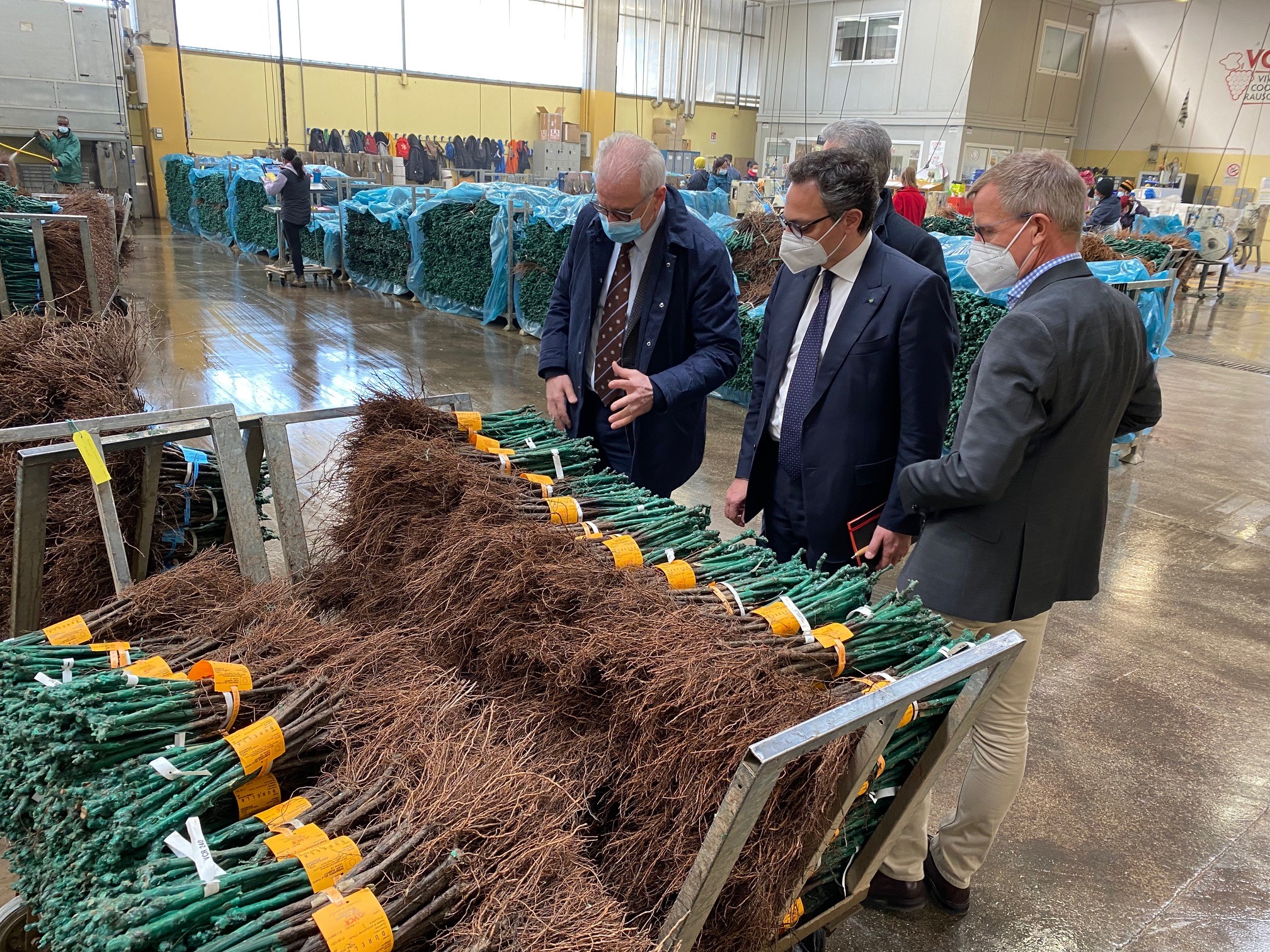
In addition, the EU Green Deal and Farm to Fork strategy clearly indicates that the whole agricultural and horticultural value chain must invest in order to do more with less. Research in that sense is essential, and the CPVO is part of the EU-funded project INVITE that aims to foster the introduction of varieties better adapted to varying biotic and abiotic conditions and to more sustainable crop management practices.
We will keep exploring with the European Commission how the EU research funding programme Horizon Europe could further support and address the needs of our sector, focusing on more projects like this in the future. We are considering the implementation of a horizon scanning approach that would help us better understanding the needs of the breeding sector in the next years.
I also firmly believe that we need to invest and support our young generations of breeders and IP lawyers. Therefore, I have initiated several partnerships with leading universities and academic institutions across the European Union, and every year we welcome between five and ten specialised trainees who practice with us at the CPVO for a period of one year. I would like more interactions between the CPVO and the education sector.
Too often the PVR system is considered at tort the ‚ÄòCinderella’ of IP rights, thus perceived as less prominent when compared with trademarks and patents. A lot has been achieved in this field. However, more needs to be done to train IP professionals, judiciaries, and the academia at large to give to breeders the recognition they deserve.
Finally, we are trying to find a way to support European breeding SMEs through the EU post-covid recovery plan. SMEs are the backbone of the CPVR system, and they are vital for EU’s prosperity. We are therefore exploring new financial options at EU level so that they could receive an incentive to develop new plant varieties and file for PVR as part of the EU SMEs Fund adopted by the European Commission under the IP Action Plan and implemented in collaboration with the EUIPO.
This list of challenges is not exhaustive, but they will surely be part of CPVO’s new strategic plan for the next five years.
In any case, we are also very much open to receive feedback and to explore new ways together!
ES: Several concepts such as EDV, Harvested Material, Provisional Protection and others are being debated heavily. Is there a need for a revision of the current legal framework for plant variety protection, and if so in which direction?
FM: The European Union is a member to the UPOV 91 Act and actively participates in UPOV working groups and meetings. The CPVO supports the European Commission providing expertise on different topics. The foundation of the European PVR system is the UPOV 91 Act. Under this Act, several provisions are currently debated such as the legal notion of EDV or harvested material. The provisional protection regime can be improved under the minimum requirement system of the UPOV Convention.
ES: The Nadorcott decision caused quite some concern among the EU plant breeding community. Would you have preferred a different decision?
FM: The decision on how to respond to the questions of the Spanish Supreme court in the preliminary ruling of the case Nadorcott is of course for the Court of Justice to take as deemed appropriate by the EU judges.
In my opinion, the Court of Justice answered the questions based on a reasonable and literal interpretation of the legal provisions under scrutiny (namely, Articles 13, 94 and 95 of Council Regulation 2100/94 on Community plant variety rights). A different thing is then the inevitable practical impact of this interpretation in the plant breeding sector.
In essence, two important distinctions have been established by the Court of Justice:
– the distinction in scope between the “provisional period of protection” (period running from the time of the publication of an application for a Community plant variety right and prior to the grant thereof, in regard of which only reasonable compensation can be claimed) and the “definite period of protection” for a granted right (period during which the right can be “fully” enforced); and
– the legal distinction between “variety constituents” and “harvested material”, where depending on the definition under which the plant material at stake falls, different legal implications follow. Indeed, in the case of harvested material, holders are only able to enforce the right if two specific conditions laid down in Article 13(3) of Council Regulation 2100/94 are met, these being onerous to fulfil in practice.
In sum, the interpretation provided by the Court of Justice is not surprising insofar it stems directly from the literal wording of the controverted legal provisions.
The Nadorcott ruling has in any case brought to light the difficulties in applying in practice these legal provisions, what suggests that the time may be ripe to reflect on whether a review thereof may be needed.
In what concerns the practical implications of the Nadorcott ruling, it can be held that a “loophole in the system” has been acknowledged: it seems that farmers may propagate a given plant variety for which protection has been applied for (but for which the right has not yet been granted) without risking being held liable for their subsequent harvesting activities. This possibility may lead breeders to reconsider their marketing and legal strategies, in particular with regard to the provisional period of protection of their varieties.


